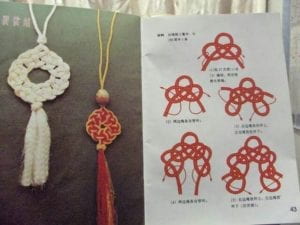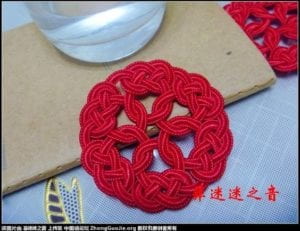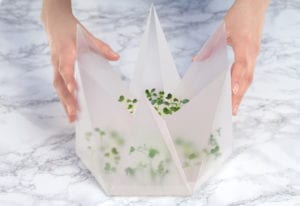Name: Eva Solo
Date: 30/10/19
Professor: Marcela Godoy
Reading Response:
Through this course, now more than ever, I have been thinking of ways how to change the ‘I’m just one person, I won’t change anything’ perspective. In Design For Social Impact, the authors highlight that “great concepts and great vision are not enough to make an impact” (19) and suggest how creative and unconventional ways of design can impact the outcome of a production. Concepts such as ‘fresh eyes’ introduce more perspectives and made me consider how much we need to incorporate a diverse group of individuals when ideating. Even the most impossible idea can lead to a new train of thought and should not be ruled out. Another section that grasped my attention was the design review process, because most of the time when you finalise a good idea and reach the end of production, you don’t really want to acknowledge what can be changed, so you subconsciously block your mind from reviewing your own work with objectivity. Gathering feedback from other is essential in creating a scalable production, which goes back to receiving a diverse handful of suggestions. The community, or network, is an important aspect in the design production pipeline as you must consider the motivation for social work or profits from others. Environmental issues are exponentially having a greater impact on the quality of life and “many beautiful-looking products have an underlying ugliness that is hidden to the consumer and is often invisible to the designer as well” as it is stated in the text Bio-Thinking: The Total Beautify of Sustainable Products. When I consider sustainable products, I imagine the whole production from the ideation phase to the discarding by the consumer to be not only be environmentally safe but also useful. This can be argued because we consume a lot that we’ve convinced ourselves that we need, while in reality our lives would not be impaired without these products. I understand that a minimalist style of life isn’t for everyone, but I do think it is important to draw the line of overconsumption when it is reached. To some extent the flow of money and creativity of luxury commodities have tampered with (at least) the Western way of life, as success is defined by the material scope of ownership. When investing in a product deemed as something you need or luxurious, ‘how was it made?’ is usually not the first question you rase. We are collectively aware of the the mob mentality phenomenon, and the consumers are currently being consensually manipulated by those seeking money so is it the responsibility of the creators to not just inform us, but also create sustainably? At this time we are coming to a realisation that “consciously or not, the design of products and processes is the main determinant of environmental impact” and this key piece of information can be the determining factor in how the next decade of production will affect the functionality of the Earth. If we cannot reach the empathy of people hungry for money, maybe we can find the way to show them that sustainable considerations directly affect them too? I am thinking how much value a determined ecological activist’s perspective could affect the design meetings of large corporations. As mentioned before, it is hard to admit that you are wrong (while creating something, and investing funds, and having people depend on you), but this is the product being a part of a highly judgmental society and trying to protect egos rather than the longevity of the planet. While we should focus on trying to manage the damage of toxicity, we should also remember that that isn’t the main issue, the one causing the most harm? – absolutely, but the one that started this trail of degradation. Ignorance was something that needed to be overcome, as we were not aware for how excess plastic was going to be piled up in landfills and in turn affect our health, but now we are aware, more than aware. Our world’s people have the recourses and all of the trail-and-error needed to determine what is the best steps to move forward in terms of sustainability, yet we still choose to ignore it. In my opinion, this sort of mentally comes from the detachment from nature and is our origins. I ask myself if it a ‘negative’ perspective when I consider that ‘true change can only be achieved from the destruction of the current framework’ as I want to believe the same way I was affected by educating myself, others can be too. Is it too late for individuals that already solidified their view on the world? Was it effective for me as I approached learning about the world and its functionality at an age when my brain was still developing its core beliefs? It is so beautiful to see society break preconceptions about individuality and allow people to explore themselves, but can this perspective be applied when discussing something that does not talk back and is able to explain itself? Our Earth is communicating with us – it is showing us the air pollution through fog we inhale, the trashed oceans by choking turtles, the diseases caused by the thinking of the atmosphere field, yet we still chose to ignore it till it personally affects our lives. The authors, of Design Is The Problem in the chapter Natural Capitalism, highlight a framework that “creates a quick foundation for understanding the value of sustainability and the new perspectives around sustainable design and development” (83). They suggest 4 shifts in favour of the mentality that “we don’t have to wait for new advances to make a radical difference” (87) which makes me very hopeful. I want to use the opportunity of our NYU Shanghai community to investigate how this approach sounds to the peers around me for the reminding time at University, because attending school here has drastically changed my views on the world, and I am curious how people are going to translate their educational experience to their contributions after college. To an extent I do feel the responsibility to not only implement these changes into my life, but make this an option for a larger pool of the population.
Assignment Reflection:
Chinese Knots:
I first familiarised myself with the craft of Chinese knots after attending a workshop hosted by the Chinese Language department. The techniques were not easy to quickly grasp, but the outcome of the beautiful designs was very fulfilling. After my first experience, I attended four more of these workshops over the years and now I want to consider how it could be replicated with recycled plastic.
To attempt this technique, a fabric like physical quality of thread needs to be achieved. An idea is to use the melting of plastic bags with an iron method to strengthen the material and then cut think strands that can be weaved together. In this process, I would predict 3-4 plastic bags to be melted together for strength while looping them together. This would also create a more three-dimensional aesthetic for the final outcome.
An interesting point: While I was researching this tradition, every single site had tutorials how to achieve the displayed result. Not only was the basic method well described, but tips-and-tricks were also usually explained in detail. With all of our discussions and now research, I do want to implement this element in my final project. To me, this represents collectivity and sharing of information. I am realising how important it is to continue the chain effect of sharing information and suggestions. Instead of avoiding the discussions of error, we can all learn, which in turn allows for more rapid progress as we all are not repeating the same mistakes over and over again.
Chinese Paper Cutting:
Another beautiful Chinese crafting technique is cutting out designs from paper. These cut outs are also at times layered to tell multi- dimensional stories. When thinking about this technique to be replicated while using plastic instead of paper, I consider the material to be thin enough to be able to cut through but durable in density. I would attempt to first create a board by cutting take away packaging, placing them together, and layering both sides with bubble wrap as a sandwich, then fusing them by melting in an oven, letting it cool down. This board then should be sanded to a a flat surface if any bumps are apparent, and cut into them with the pre-made designs stencils. Another technique could involve fuzing bubble wrap layers together with an iron and carving the designs out from this type of a material. It would be easier to cut, but would not be as durable as the food packaging.
Chinese Kites:
On a windy day, the sky is filled with colourful kites, and I have been noticing this trend ever since I came to Shanghai. Their intricate deigns amazed be as I was used to a simple rhombus shaped design, and these were not only detailed in decorations but took form in different shapes, and layers. I had never seen such a view, and can only draw similarities to how a bundle of colourful air balloons look at sunset. I also remember the first time I saw a dragon shaped kite, this time there weren’t a pool of people and the outlier looked like an alien object floating in the sky, till I saw the string attached to its head. This view has been something I constantly look forward to when I visit the Shanghai Museum of Science and Technology area, as a lot of people choose this location to display their kite flying skills there.
Although the original use of the Chinese Kite Tradition was for distance measuring, in the current day they are heavily used as an attraction for kids and decorations for festivities. These kites are made up from plastic and wire and are carefully put together due to its functionality of flying. The fabric-like plastic material stands as a base for wind resistance and the wire solidifies the core skeleton that is attached to a plastic strand for holding. A lot of these decorative kites use a lot of material to create designs that dance in the wind on top of the base framework.
In order to replicate this traditional toy, three elements need to be considered: the strand for holding, the skeleton, and the wind resistance surface. For the start I would implement the Chinese Knot method I described earlier for durability and light weight. I would use plastic threads, melted in the oven, and then shape them to a cross like shape to attach the main surface of the kite onto. Keeping in mind the light-weight necessity, I would test: bubble wrap fuzzing, starch plastic solution recipe, or plastic bottles. For the plastic bottle idea: I would cut up plastic bottles horizontally and weave the strands into a formation without gaps, this would stand as a base and I would either heat or oven these pieces together, adding a outer surface of plastic bags. This ideation is very interesting to me, and I think I want to explore it further. As I mentioned I want to include some sort of a tutorial with my final project, especially considering its need, and seeing the amount of kites I encounter – this could be an idea which I share with my audience. If the handbook includes direct tutorials for kids and adults to create their kites together, and also provide some information why not only this process has an effect on the ecology, but actions as such in the grand scheme, – maybe it could be a point of consideration to implement more of the up-cycling in their daily lives.
I was reading the National Geographic article Eat Your Food, and the Packaging Too that covered the current impact of plastic pollution and the current ways damage control is implemented. It discussed some innovative ways companies attempted to replicate the childhood dream that Willy Wonka actualised of an all edible room.
#1:
The first idea was an edible coffee cup: KFC used heat-resistant white chocolate linking and a hard cookie/wafer shell to distribute coffee, in the UK. Along side ecological considerations, they also prioritised simplicity. The quotation by Shilpa Rosenberry “this type of edible packaging is definitely aligned with the global consumer mind-set in terms of sustainability and simplifying their life” conveys awareness and the changing perspective on consumption from the masses. This aligns with the Natural Capitalism framework, because although to a certain extent we have reached a crisis (16 billion disposable coffee cups are thrown away each year) this type of thinking shows the detachment from profit being the one and only priority. Fast food companies, like KFC, are fully aware regardless of what they put out, people are still going to consume the products for convenience, especially when thinking about an addictive stimulant like caffeine.
Although I am not sure if coffee consumers are necessarily interested in having a snack after their cup, this type of thinking is very forward for societal change.
#2:
I came across packaging that disappears and was immediately intrigued by this eye-catching title. A design firm in Sweden began dabbling with the idea of a quickly biodegradable packaging to replace plastic use and in turn waste. “An oil bottle made from caramelised sugar, coated with wax, that cracks open like an egg; a smoothie container made from seaweed that “will wither at the same rate as its content,” and a peel-able beeswax package for rice or other dry goods” seem quite farfetched without context. I was reading some of these aloud with friends and them, having no context of my interest, were laughing at the ideas and their complexity. I briefly touched upon plastic pollution and their attitude changed as they drew the links between environmental need and these products.
I think these ideas are perfect for containing takeaway food, as the contents are consumed fast and the longevity of their packaging extends over our own lifetimes for no other need than transportation. This process aligns with the values highlighted in Bio-Thinking: The Total Beautify of Sustainable Products due its focus on the entire pipeline of production from ideation to waste. Tackling an issue that is more cost-demanding than the simple act of ignoring, portrays understanding on the effect of their productions.
#3:
Stonyfield Organic have also approached the packaging issue of their dairy products and tested our edible packaging to their consumers in the United States. They highlighted that this progression was motivated by their mission statement focusing on healthier living, and the wasted packaging were directly affecting the state of planet they so fondly are trying to improve. Considering the Natural Capitalism framework, this company was able to target a design issue and test our solutions. Although their implemented test rounds, the idea was stopped and altered after the launch. I could draw a link to the profits and the constant demand for their products from heir loyal consumers to be an incentive to choose an easier way rather than the more ecologically-friendly one.


























Leave a Reply